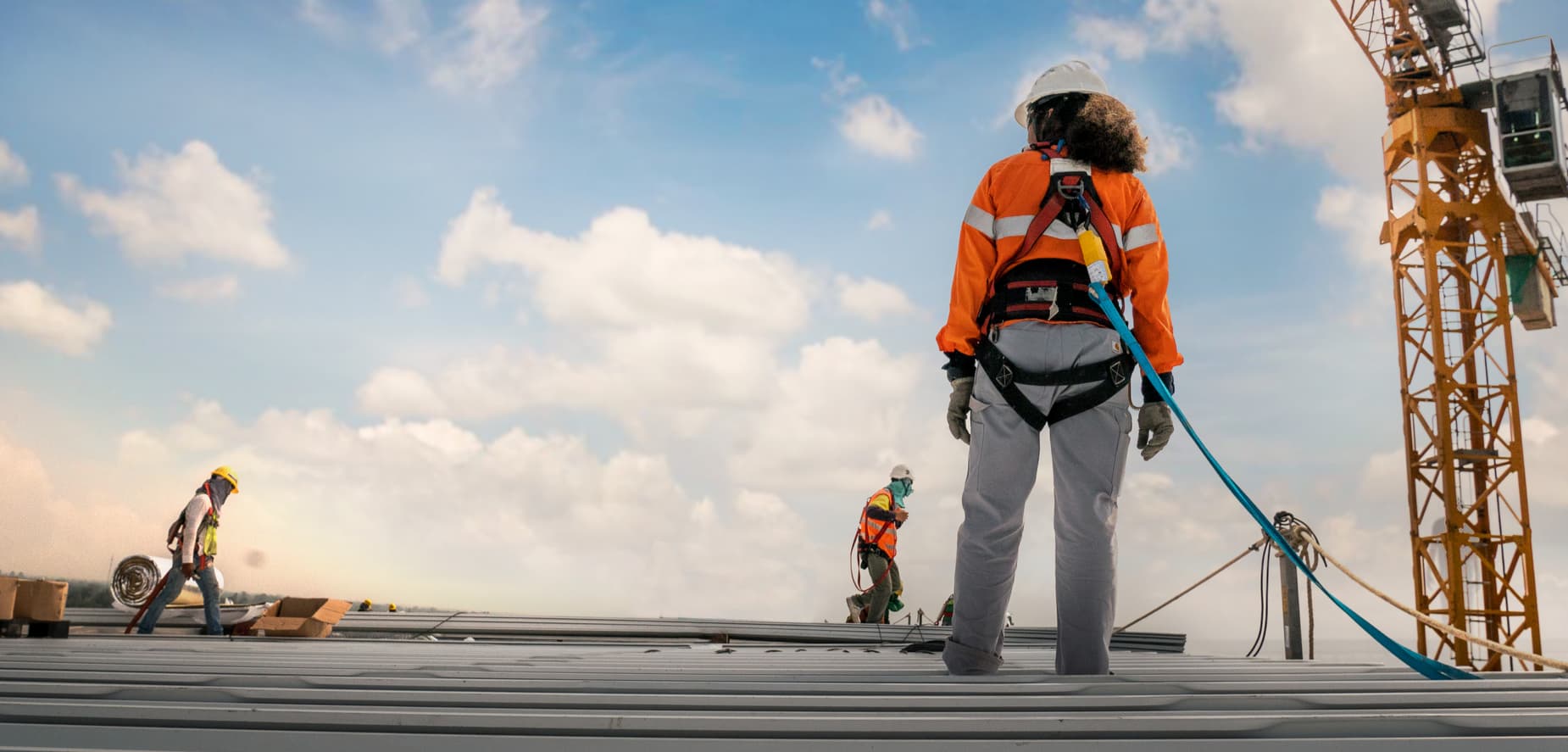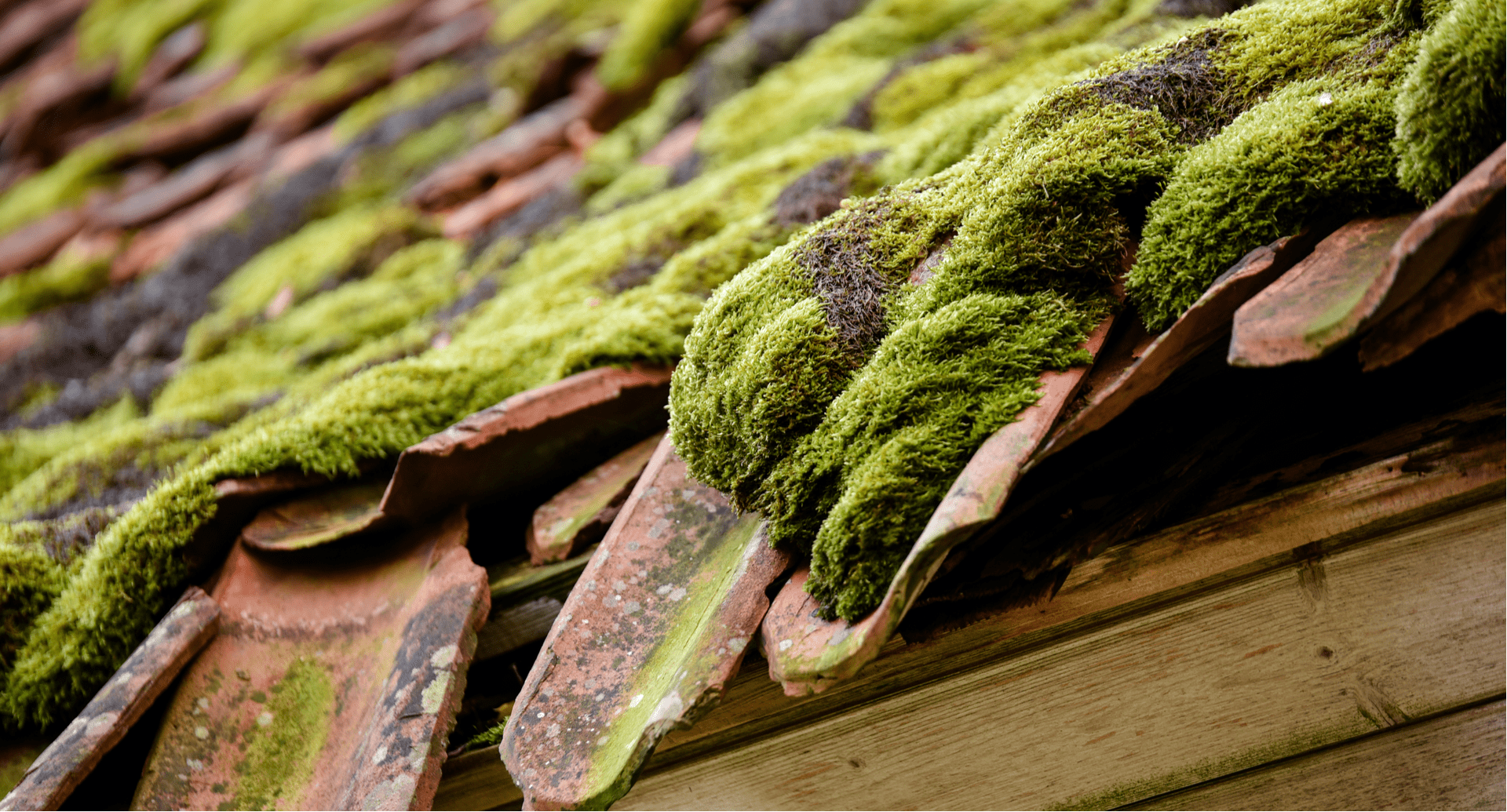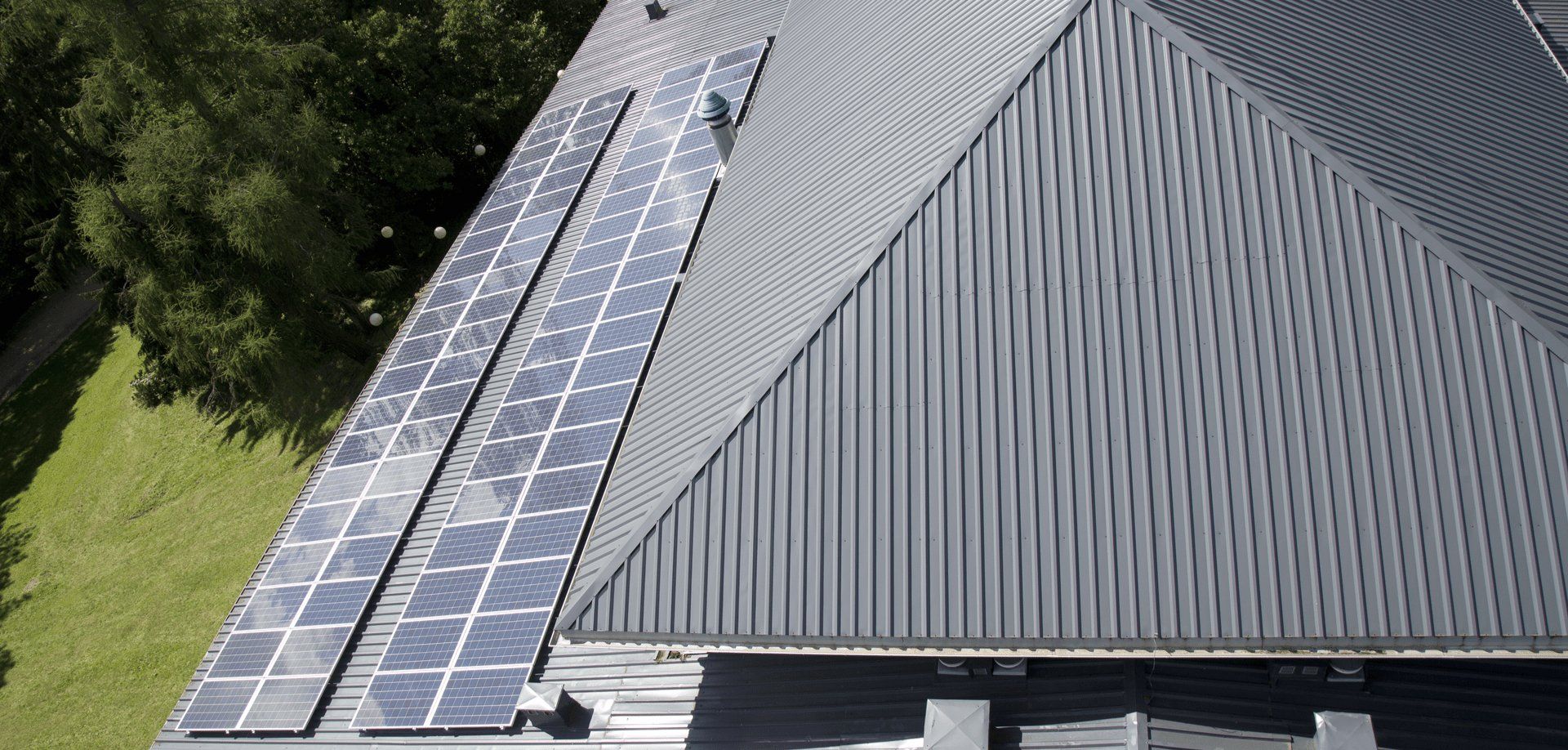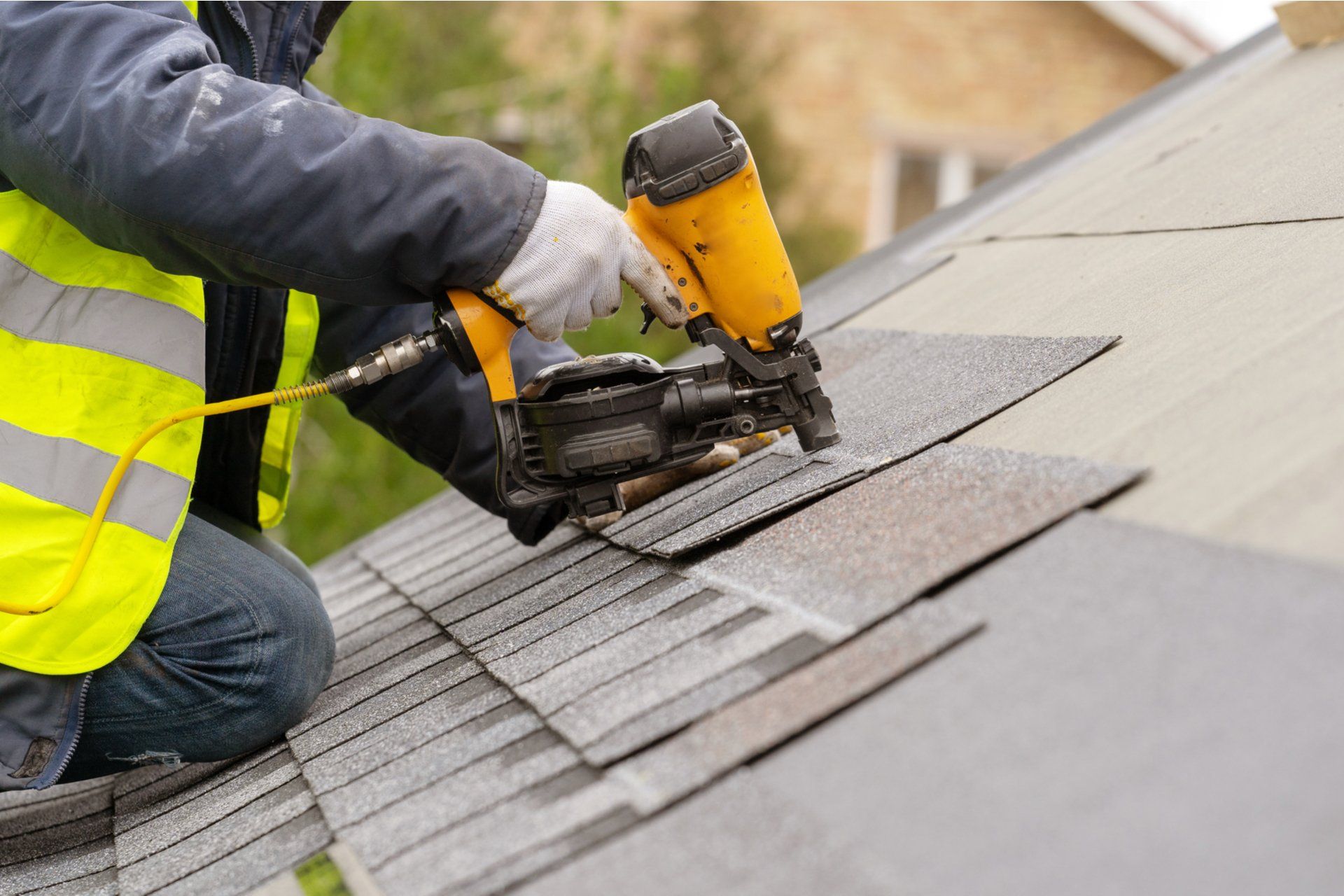Roofing & Home Blog
Coral Springs Roofing Experts
You may have noticed that most commercial buildings have a flat roof, not all, but most do. There are a few key reasons why this is so. Additional Space Many people do not realize that a commercial flat roof can often serve as an additional floor on top of the building. There are actually quite a few uses for this space. Some buildings use it for gardening. Other flat roofs use it for entertainment, such as rooftop bars and parties or pools. A more practical use, especially on condo or apartment buildings, is for the AC units to be stored on top of the flat roof. Less Expensive Flat roofs are cheaper than their steeped counterparts. A flat roof does not require any additional protective measures or framing. Plus, a flat roof can stand on its own and be fully functional. The maintenance for a flat roof is also less expensive, as are total flat roof replacements. Practicality At the end of the day, flat roofs are also much more practical for commercial buildings than residential properties. Steeped roofs have more area to cover and become pricier, which is not something the investors are interested in concerning commercial property investment ventures. In addition, several states have height requirements for buildings, making it very impractical to install anything other than a flat roof. Commercial flat roofs typically are built quite sturdy, using more advanced materials than residential roofs. But nonetheless, a commercial flat roof can still need to be repaired from time to time and eventually replaced. For business owners that need help with commercial flat roof repairs and replacements in Coral Springs , be sure to call the Coral Springs Roofing Experts .
Understanding how condensation can affect your roof and attic can be vital to avoiding severe roof damage, leading to needing to replace your roof. In Coral Springs, FL, this can be a real issue, seeing condensation caused by high humidity levels, which southern Florida is not lacking. Indoor Condensation Causes There are quite a few things that can cause condensation issues in your home, such as cooking, bathing, laundry, indoor fountains, etc. The condensation occurs when too much humidity is inside the property. If you notice the condensation on your windows, it's indicative that there is unwanted moisture within your home. So What Does Condensation Do To Your Roof? Excess moisture within your roofing system can wreak havoc! The majority of roofs are made using a lot of wood. Over time the moisture will soften and weaken the wood. The insulation in your attic is also compromised over time with excess moisture. And any metal like fasteners can rust as well. All of this can add up to severe roof damage if not attended to. Is There A Way To Manage The Home's Humidity Levels? Yes, there are a few things that can alleviate this issue within your attic. There are two primary ways: install ridge vents and the other by installing exhaust fans. The ridge vents get placed along the ridges at the top of the roof. Due to warm air rising this is the best place. At the eaves, there are intake vents that allow fresh air to flow into the house. Exhaust fans also help a lot, and they can be powered by solar! If you're interested in learning more about how the Coral Springs Roofing Experts can help reduce your home's condensation, give us a call today!
The roof is constantly exposed directly to the elements. Here in Coral Springs, those elements are almost year-round blistering heat and sunlight, combined with large amounts of rain for half of the year. So very well built roofs, using top-of-the-line roofing materials, can still end up needing repairs from time to time. So what situations almost always call for a roof repair? A Leaking Roof This seems like an easy and obvious one. Suppose there is water leaking from the roof into your home; more times than not, there is an issue with the roofing system that must be fixed. There are several reasons why a roof could be leaking; so many, in fact, that many blog posts just like this can be dedicated to that topic alone. The important thing is getting the leak fixed quickly, as a strong leak left unchecked could result in a full roof replacement rather than a repair job. A Punctured Roof As with leaks, there are many ways the roof can get punctured. Foot traffic from humans is one of the more common ways; however, wildlife can also be the cause of puncturing a roof; not to mention more obvious ways such as a tree branch flying during a storm directly into the roof. Punctures can lead to leaks, which, as discussed above, could lead to replacement rather than repair if left unchecked. Blow Ups In short, poorly connected flashings are usually the culprit for blow ups. Blow ups are when the flaps and seams open. The significant issue here is the risk of wind uplift, blow ups lower the resistance to wind uplift and must be fixed quickly, especially if hurricane season is right around the corner. Wind velocity can become extremely dangerous. Blisters and Splits Blisters can lead to other roofing issues. While it's not essential to worry about every little blister, the larger ones should be fixed ASAP. Often blisters result from dry laps, old age, and a bad connection to the bituminous roof system. Other roofing issues need repairs. However, these are some of the more common ones that most roofing companies deal with daily. If you are looking for roof repairs in Coral Springs , then contact the Coral Springs Roofing Experts .
Do you ever put all that much thought into the condition of your roof? Do you ever have it inspected? The answer is more than likely not. In truth, most people pay little to any attention to their roof's condition, that is, until there is a problem and the roof is leaking. So when is a good time to go about getting a roof inspection? Every 6-12 Months. While annual inspections are fine and better than nothing for sure, it is advisable to get an inspection every six months, helping to space the inspections out, putting them in different seasons. For Coral Springs, having one in the summer during the rainy season would be wise and then another after to assess any potential damage and fix it before it gets out of hand. After A Big Storm A significant thunderstorm, tropical storm, and hurricane blowing through are all valid reasons to have the roof inspected. Particularly when it comes to tropical storms and hurricanes where the wind velocity can easily rip shingles from the roof or cause tree limbs to fly into the roof, puncturing it. Before Hurricane Season Is your someone who doesn't have a roof maintenance plan and rarely checks the roof? It would be wise to get a roofer out to the house before the hurricane season getting into full swing. If there is any damage on the roof, it can compromise it in a hurricane, turning a dangerous situation even more so. Any damage discovered during the inspection should be fixed ASAP. Before Putting The House on The Market Obviously, when selling a home, the goal is to get as much money as possible in the sale. A major part of the home's structural integrity is the roof; a damaged roof can quickly reduce the home's asking price. A new roof is a great selling point, meaning the new homeowners will not have to be concerned with replacing the roof anytime soon, a significant benefit to them! In Conclusion The bottom line is this….. don't neglect your roof. Just because there isn't a visible problem to you doesn't mean the roof is fine. If it's been years since you've had someone come out and take a look, then perhaps it's time to change that; contact the Coral Springs Roofing Experts if you believe you have any roofing damage that needs to be addressed.

Commercial roofings projects can run into the millions. With such money on the line it is very important for business owners or property managers alike to make the correct call when hiring a commercial roofing company for a new roof installation. Continue reading to find out the mistakes that new or inexperienced roofers make when trying to get into commercial roofing. Insufficient Industry Knowledge Residential roofing and commercial roofing are quite different. Besides needing differing materials and tools for commercial projects, the experience needed for commercial roofing is different. There are many more factors to consider when working on a giant building, than compared to a small home. Low Bidding Unfortunately many newer commercial roofers gain their experience from taking jobs below what most companies would accept. Do you want to take that risk with your new commercial roof? The allure of saving money on the bid is what ends up costing so many businesses in the long run when complications arise due to a lack of foresight and experience. Insurance & Licensing You’d be surprised how many companies get hired to do commercial roofing work that do not possess the correct license and insurance to do so. This can become a huge problem down the road if the project does not go well. You’d be wise to review that they do indeed have both a commercial roofing license and insurance before hiring them. No Comparable Work If the company you are considering to hire has never worked on a commercial roof similar to yours and can’t prove they have done so then move on. Experience is perhaps the single biggest factor to consider when you need to make that final hiring decision. Make sure your project is just another walk in the park and not a whole new experience for the company you hire. What’s Their Reputation Look Like? This step is just as critical as all the others. If you have multiple experienced companies all with similar bids, how do you decide? Reputation can be that tie breaker. Check each company and see what the online reviews look like, are they good or bad, were bad ones responded to? These are all things to take into consideration, obviously a company not responding to complaints may not care as much as one that does. Once you have done a thorough examination of each company and the issues spoken about above all check out, then you should consider the price. When the companies all have the proper experience needed, a good reputation and proof of work, then you should use price as the tie breaker. But do not fall for the trap of the inexperienced roofer underbidding, so often this backfires in ways that will cost both money and time.

As a Florida homeowner, maintaining your property and being sure it remains up to code at all times is amongst your most important responsibilities. Similar to most life investments, all homes require upkeep as years go on to bring maximum comfort and security. The longer you have lived in your home, the more likely you have mulled over investing in a new roof to replace your old roof. Before moving forward with the decision to replace your roof entirely, there are some warning signs to keep an eye out to figure out whether or not the time is proper for you and your house. Right off the bat, on your journey to figure out roofing, you've more than likely crossed the" 20" year rule for a roof's lifespan. That figure is used as a benchmark. The majority of residential roofs need a replacement within that window. However, there are quite a few variables to consider, and all roofs are unique. Your roof takes a lot of external wear and tear with every year that flies by. Intense sunlight, strong winds, flying trees, wildlife, hurricanes, large amounts of rain, or chaotic weather conditions – all of these have a direct correlation with a roof's lifespan. How quickly your roof needs to be replaced depends on many factors: Weather. Correct maintenance and preservation. Age of the materials. How good the materials used are. How well it was installed, to begin with. Were repairs addressed when needed? Keeping pests and rodents away. External debris builds up. Your Roof Is A Few Decades Old Typically an asphalt shingle roof has a lifespan of about 10-20 years, with metal and tile roofs tending to have a much longer lifespan. If your roof is approaching its typical replacement age, you should really start thinking about a roof replacement. If other roof repairs were placed over the top of your existing roof - a technique called overlaying - you should definitely be thinking about a roof replacement. Overlaying is a patch job that can hide larger roofing issues beneath the shingle surface. Conduct An Interior Roof Check Once you have started to brainstorm the idea of investing in a new roof, start by conducting your own research at home by inspecting your roof's state from the inside out. Take a flashlight with you to your attic or to the area in your home where the interior of your roof is easy to see and look for the following signs of a more serious issue: Beams of Light: Light beams are indicators of roofs that need replacements or repairs. To see the full extent, examine the interior of your roof during a time of day with good sunlight to locate and identify any light beams. Leaks: Inspect the interior of your roofing area for drips and potential water damage. When the roof starts leaking, other important structural areas of your house and its foundation are at elevated risk, particularly if you decide not to fix the roofing problem as fast as possible. Very damp areas can lead to further rot and mold growth that can contribute to breathing and other health ramifications. Streaking & Staining: Take note of all of the inside of your roof and try to locate potential spots, stains, and streaks. Check any discolored area of your roof for additional information on its cause and potential leak culprit. Stains and streaks within the interior walls of your roof can signal a larger and more severe problem involving your roof's durability. Look For Shingle Issues Inspecting the shingles on your roof is another way to figure out whether or not your roof needs further attention or a replacement entirely. When checking out the outdoor shingles on your home's roof, be wary of any cracks, misshapen shingles, or shingles that have warped or angled upwards. Asphalt that is warped, cracked, or misshapen may require a further inspection to conclude whether or not they can be replaced individually or if you are better off investing in roof replacement. Locating shingle granules all over your roof or stockpiling in your gutter can also signify that it is time for a total and thorough roof replacement. Large amounts of asphalt granule loss is a huge sign that the roof's state is not where it needs to be to ensure your roof can hold up to a large storm. Moss, Dark Spots, And Algae Growth Dark spots (or generally grimy-looking shingles) are caused by moss and algae growth. These might not be directly tied to how often you need to replace your roof (or get it repaired), but these issues can spread and cause damage. Have you seen fungus or other types of nature growing on top or out of your roof? If so, don't worry. Our natural environment has a tendency to grow over any man-made building in its path if it is not adequately tended to and maintained. When looking over your roof and the algae you have discovered, make sure to do so by inspecting both the inside and outside of your roof. While most plant growths are likely to be visible from the outside of your roof, if there is a bigger issue at hand, nature could also show up on its own inside the attic without your knowledge. In many situations, eliminating the growths from a roof is a way to fix the issue without money needing to be outlaid rapidly. However, if you see substantial growths on your roof or inside the property, it is highly advisable to locate a professional to determine the root cause and reason for the growths. In the event the roof is just completely overgrown, then the only option would be to get a new roof; this mostly happens to roofs that go unattended for long stretches of time. The good news is, natural growth and accumulation is not typically a sign that you need to repair or replace your roof. Rather, moss is more-so an eyesore to your roof and one that is quite common in humid areas like Florida. If the situation calls for a new roof installation, there then becomes a number of decisions in the near future. Beginning with the roofing material to use, will you stick with asphalt or consider tile? Which roofing company will you hire? If you perhaps have a valid insurance damage claim. For many people having the cash on hand to get a new roof may not be a possibility. There are financing options available for qualified homeowners offered by most reputable roofing contractors. Make sure to do proper research before deciding which roof contractor to work with.

A newer shift amongst Coral Springs, FL homeowners, is to go with a metal roof replacement for their homes. While metal roof replacements are gaining popularity throughout America, it is more of a shift in the South, as they have a greater threat of hurricanes. As we will explore, there are numerous benefits to opting for a metal roof installation. While there are numerous reasons more people are selecting metal roofing, a big one is that homeowners in Florida are becoming less transient. As more people choose to stay in their homes longer, the upside of a low maintenance roof with such durability becomes quite appealing. The greater upfront expense of a metal roof installation is the only real drawback, that and the inability to accurately color match if needed to make repairs. Metal roofs are as durable as they are and rarely need repairs, so the color matching obstacle is never an issue most people deal with. Long Lifespan Relating to the previous point that homeowners are not moving as much in the state, it is smart to put money into a roof replacement that can last forever. With a metal roof, the roof's expected lifespan is anywhere between 50-100 years depending quite a bit on how well maintained the roof is kept. Superior Resistance to Wind Metal roofing is designed to handle severe weather conditions; metal roofing has the top wind resistance rating of any roofing systems. With the threat of any given summer of deadly hurricanes, a metal roof replacement can provide additional comfort to you and your loved ones. Furthermore, they don't crack or peel, nor are they water absorbent. They are also resistant to mildew, decay, and rust. Curb Appeal Modern-day metal roofing on many residences look quite alluring, with a swift departure from the corrugated metal sheds many people imagine when metal roofing is brought up. Boasting a wide variety in both colors and architecture, metal roofing instantly boosts a home's curb appeal. Elevate The Value Of Your Property One of the other major perks of installing a metal roof besides its longevity and aesthetic appeal is that a freshly installed metal roof will increase the property's resale value. Potential buyers will see the benefit of buying a property where they could never need to replace the roof. Better Energy Efficiency A metal roof replacement has two primary weapons against the hot Florida sun. A metal roof's first line of defense is it's the ability to reflect sunlight; a lot of heat is simply diverted from the property via reflection. Its second line of defense is that a metal roof is emissive, in that it rapidly releases the heat it does transfer to the home. There could be considerable monthly savings on the FPL bill when selecting a metal roof instead of an asphalt roof, since asphalt transfers such large amounts of heat. Environmentally Friendly For people conscious of the natural world, you'll be glad to know that a metal roof is 100% recyclable. In comparison to an asphalt roof, of which all of it goes directly into a landfill. Fire Resistance It may be more comfortable to sleep at night, knowing that your metal roof is resistant to fire . Metal roofs can take on lightning strikes and wildfire and still not catch on fire. Reduced Homeowners Insurance You could save extra cash every month by merely letting the insurance company know you reroofed with metal. Since a metal roof can last close to a century, the insurance companies know they will never be installing a new roof on your property. In addition to all the pros discussed above, the maintenance of metal roofing is quite low. Deciding which roofing material to select for new roof installation is a massive decision that should come after getting all the information. The goal of this writing was to highlight the benefits of a metal roof replacement in Coral Springs.

Asphalt shingle roofs are by far the most popular in the country and are a popular option in Coral Springs, Florida. Roofing problems for most people seem to arise out of nowhere, mainly since most homeowners neglect their roofs. Most people do not ever check their roofs for damage in addition to not having a roof maintenance plan in place. So for this reason, neglect, many homeowners don’t realize they have roofing problems until those problems are so bad that the situation requires a new roof. Most homeowners opt for getting an asphalt shingle roof, although there could be a strong argument made for tile roofing in Coral Springs, FL. In this article, we will cover the Pros & Cons of an asphalt shingle roof. Pros of An Asphalt Shingle Roof in Coral Springs, FL: Price - The bottom line for many people is what matters most, and there is quite simply no better option price-wise than going with an asphalt roof. It Works - Even though installing a new asphalt shingle roof is cheaper than most other roofing material, it still does appropriately do its job of keeping you safe and dry. Traditional - Asphalt roofing offers a very popular, accepted, and somewhat classic look. Not everyone wants to call attention to the roof and prefer something more practical. Variety In Color - While the shapes aren’t quite numerous, asphalt shingles do come in many different colors. Ease of Installation - It is not recommended to install your roof, however for professional roofers, it is a much easier and quicker roofing installation than other popular options such as tile. Makes the job less expensive and with many roofing installations will take no longer than two days. Shingles Are Replaceable - A well-installed shingle roof should last between 10-20 years ; however individual shingles can take damage or become removed entirely. However, this is not a big deal, as individual shingles are rather easy to replace. Cons of An Asphalt Shingle Roof in Coral Springs, FL Durability - This ties back to the cost factor. While yes, asphalt shingle roofing is a cheaper option, it is also an inferior quality when compared to tile or metal. Asphalt shingle roofs can last up to 20 years, many don’t, but 20 years is possible with proper upkeep. In contrast, a tile roof can easily last double or more than that of an asphalt shingle roof. High Winds - One of the benefits of living in Coral Springs is the beautiful weather; however, there is a downside to that weather, hurricanes. Asphalt shingles, primarily architectural (dimensional) shingles, should be able to withstand powerful winds. But hurricanes are one of Mother Nature’s most destructive forces, and many asphalt roofs take severe damage when they blow through. Fortunately, for those with homeowners insurance, provable damage from a hurricane usually allows for the roof replacement to be covered. Mildew - The humidity in south Florida is legendary; this can be problematic for shingles, especially those in shaded areas. It is recommended to have the roof regularly inspected to avoid any possible mildew build up. In Conclusion Installing a new roof is a significant investment and one that, as a homeowner, you shouldn’t be making all that often. That being the case, it is wise to consider all the roofing options available. While asphalt shingle may seem like a quick, cheaper solution, installing a new tile roof may significantly increase home value and may well be the last roof installation you ever need to do.

It is now June, which means that down here in Coral Springs we have the rainy season also known as hurricane season. As all Floridians are aware during this time of year it’s almost a sure bet that almost each and every day for at least a little while in mid afternoon we will get a downpour. With some days bringing rain all day, at this time of the year Florida hardly lives up to his namesake, The Sunshine State. This is also the time of year that many homeowners become aware that their roofs have damage, normally this comes in the way of leaks. A leaky roof can cause a lot of damage and is something that should be addressed right away, whether that be to fix the area or replace the entire roof. And this should in a perfect world be taken care of prior to the heart of hurricane season when we actually may get some blowing through. Trust us, you do not want to deal with a major hurricane when you have a roof badly in need of repairs or being replaced already. Unfortunately not everybody has either the cash in the bank or enough damage to have homeowners cover the replacement. For people stuck in such a situation we are now able to offer Coral Springs homeowners 100% financing options for their residential roof replacement projects. We have an option that is credit based and also one that is not credit based nor is income verification required. So we are pretty confident that no matter the current financial situation a homeowner may be in, if they’re serious about making sure the roof over their head is safe, secure and able to endure hurricane season that we will be able to help.


